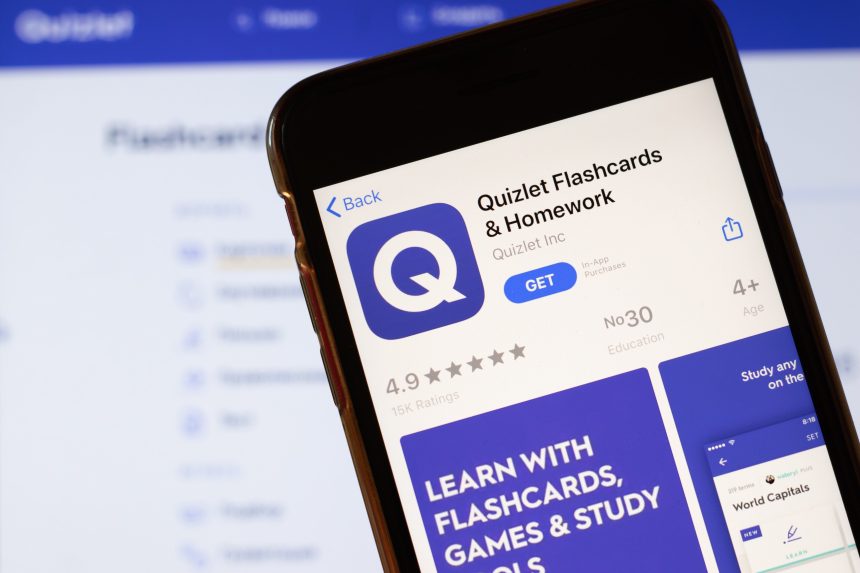Contents:
Revision is an essential element of academic success, but not all revision techniques are equally effective. Some students may spend hours revising, but that doesn’t guarantee good results. On the other hand, if you’re struggling to motivate your child to revise, ensuring their efforts are fruitful becomes even more crucial. There are many different methods, and finding the best revision techniques for your child can make a huge difference to their grades.
To help your child get the most out of their revision sessions, here are some effective revision techniques that can boost their learning potential.
Use active revision techniques
Passive learning, such as copying notes or re-reading textbooks, is one of the least effective revision methods. To truly understand and remember what they learn, your child needs to actively engage with the material. Active learning can take many forms and leads to improved comprehension and retention of information.
Encourage your child to use active revision techniques such as:
- Making flashcards: Creating flashcards involves condensing key points or concepts onto small cards for quick and efficient review. Each flashcard typically contains a concise summary of a single idea or topic, making it easy for your child to review and test their knowledge on the go.
- Creating mind maps: Mind maps are visual representations that help organise and connect ideas and topics in a structured yet flexible manner. By starting with a central concept and branching out into related subtopics, mind maps allow for a holistic view of the subject matter. This visual approach stimulates creative thinking, enhances understanding, and aids in memory recall by leveraging the brain’s natural ability to process and retain visual information.
- Blurting: Blurting involves recalling information without looking at notes or prompts. This technique encourages active retrieval of knowledge from memory, reinforcing learning and retention. By blurting, your child can strengthen their ability to recall information under pressure, such as during exams or presentations. It also helps identify areas of weakness that require further review or reinforcement.

- Dual coding: Dual coding is the process of combining information in various formats (words, images, and diagrams) while learning. The use of both verbal and visual cues engages different parts of the brain, helping learners better understand complex ideas and retain information.
- Transforming information: Transforming information involves rephrasing or reformatting content to deepen understanding and facilitate memory consolidation.
- Teaching others: Teaching others encourages your child to take on the role of the educator by explaining concepts to someone else, whether it be a family member, friend, or even a pet. Teaching others not only reinforces their own understanding but also allows your child to approach the material from a different perspective. This active engagement challenges them to articulate complex ideas clearly, identify gaps in their knowledge, and adapt explanations to suit different audiences.
Employ spaced revision
Spaced revision, or the practice of spreading out revision sessions over time, is one of the most effective revision techniques for long-term information retention. By ensuring that their revision sessions are spaced rather than crammed, your child can maximise the efficiency of their learning process and enhance their ability to recall information when it matters most.
Here are some practical ways your child can incorporate spaced revision into their study routine:
- Create a revision timetable: Creating a revision timetable ensures that your child dedicates regular review sessions to each subject, reducing the need for last-minute cramming.
- Spaced repetition software: Repetition is key to effective learning. Your child can use revision apps like Anki, Quizlet, or Memrise to create digital flashcards. These apps use spaced repetition in their learning structure, scheduling review sessions for each set of flashcards at optimal intervals. This ensures efficient and effective spaced revision.

- Mix up their subjects: Your child should avoid focusing exclusively on a single concept or topic during revision sessions. Interspersing different subjects or topics (known as interleaving) promotes long-term information retention and problem-solving skills.
- Review previous material: Regularly revisiting material during revision sessions reinforces memory consolidation and actively refreshes your child’s knowledge base.
- Use mind maps and posters: Encourage your child to use visual aids, such as mind maps and posters, as additional tools for spaced revision. When put up around the home, these visual representations serve as constant reminders of key concepts, making them easier to recall during exams.
Revise in focused intervals
One of the best revision techniques for students struggling with concentration or motivation is the Pomodoro technique. This involves breaking their revision sessions into small, manageable chunks:
- Revise for 25 minutes: Focus intensely on revision for a short, intense burst of 25 minutes. During this time, encourage your child to immerse themselves fully in the material and maximise their productivity.
- Take a 5-minute break: Following the 25-minute study session, prompt your child to take a brief 5-minute break. This interval allows them to rest and recharge before diving back into the next focused session.
Your child can adjust these timings to align with their preferences and attention span.
Apply knowledge to exam questions
It is important for your child not to rely solely on revising content but also to practise applying that knowledge to exam questions. This will ensure that they not only understand the content of their specification, but can also use it effectively in real exam scenarios.

One of the best revision methods for this is practising past papers. It familiarises students with the types of questions they might encounter and gives them a sense of the exam format. It also helps them get a feel for the keywords or phrases examiners are looking for in their responses.
For many students, transitioning to exam questions can be daunting, particularly if they encounter initial difficulties. However, this transition is essential for their success. Here’s how you can support your child through this process:
- Start with questions by topic: After revising a specific topic, your child should test themselves using relevant exam questions. A good approach is to start with topics they find easier to gain some confidence before moving on to more challenging topics. Physics & Maths Tutor provides exam questions conveniently organised by topic!
- Use mark schemes: Self-marking using mark schemes (or using our step-by-step video walkthroughs) helps to identify areas for improvement and refine exam technique. Common student pitfalls include misinterpreting questions, using the wrong command word, overlooking key terminology, or failing to provide sufficient detail to earn all available marks. By using mark schemes effectively, your child can fine-tune their exam skills and approach each question with greater confidence.
- Practise past papers: Around one month before their exams, encourage your child to sit full past papers under timed conditions. Practising past papers under timed conditions not only improves time management but also familiarises your child with the pressure of exam conditions. This practical revision technique helps build resilience and confidence, ensuring your child is well-prepared to excel on exam day. Your child can find banks of GCSE and A Level past papers and mark schemes on Physics & Maths Tutor.
- Sit a predicted paper: Predicted papers are another great addition to your child’s revision toolkit. These exam-style papers are created based on likely topics that could appear in upcoming exams. As with past papers, encourage your child to sit them in exam-like conditions. PMT Education’s predicted papers have been created by subject experts and are available for a range of GCSE and A Level subjects and exam boards. You can find them in the new Predicted Papers Hub.
Effective revision is the cornerstone of academic success. Whether your child is preparing for exams or looking to deepen their understanding of course material, active engagement and strategic revision methods will put them on the path to success. Encourage your child to approach revision as a dynamic process that goes beyond rote memorisation. With dedication and by implementing the revision techniques outlined in this guide, your child can unlock their full academic potential and excel in their studies.







Comments